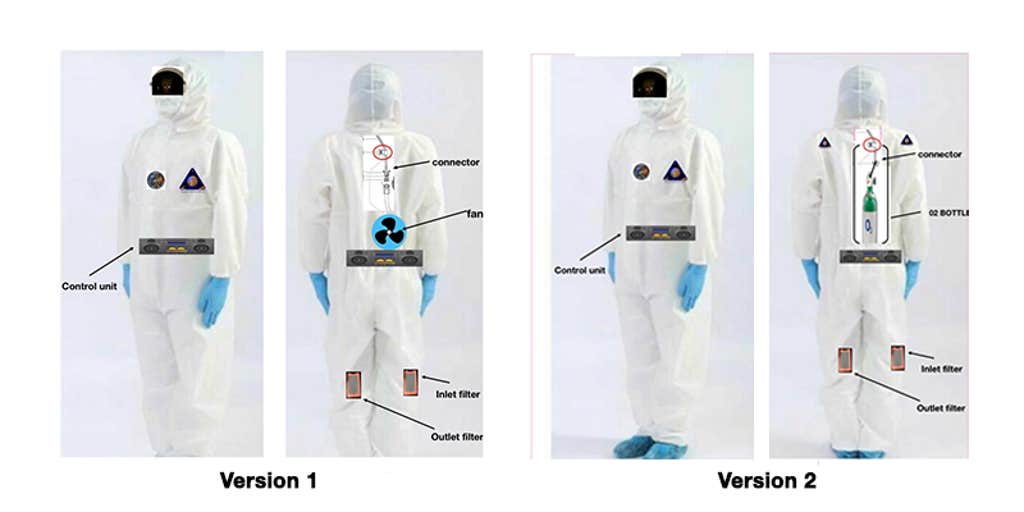The pandemics are coming for us—whether via a fungus that turns us all into murderous zombies, a hemorrhagic fever carried by ticks, or perhaps a deadly pathogen we can’t even imagine yet.
Next time, we might at least have better personal protective equipment. One inventor named Lawrence Kuznetz, a 40-year veteran of NASA, a professor at the University of California, Berkeley, and a science-fiction author, has designed a garment called the MQ suit—for “mobile quarantine”—that would allow people to quarantine in a crowd, in a busy hospital, or at home with loved ones.
The idea for the suit came to Kunzetz when the COVID-19 pandemic was at its deadliest. He had been designing a Mars suit for the previous 22 years and realized he could repurpose many of the elements to build the perfect pandemic garment—sterilizable, reusable, lightweight, inexpensive. Kuznetz met an investor, and they put together the first prototype by hand. He recently introduced it to a small crowd during an event at the University of California, San Diego.
A spacesuit designed for Mars was a much better model than one for the moon because Mars is a lot more like planet Earth, says Kuznetz. “It’s got gravity; it’s got weather; it’s got an atmosphere.” Spacesuits for the moon—where gravity’s pull is minimal—typically weigh over 300 pounds. That kind of heft would be impossible to lug around on Mars or on Earth.

Keeping wearers cool is one of the biggest challenges with a garment like this, says Grant Anderson, president and co-founder of Paragon Space Development Corporation, which partnered with Kuznetz to develop the temperature-regulating features of his Mars suit a few years ago. That’s because when humans breathe, they expel not just CO2, but moisture, and most of the cheaper systems for removing moisture from a system use processes of absorption that release heat. “You end up with breathing environments that get hotter and hotter and hotter,” says Anderson.
The MQ suit weighs about 1.5 pounds, would cost $200 or less, and has oxygen circulation, filtration, and cooling systems powered by a lithium-ion battery. A pressurized oxygen circulation and cooling system in the helmet is separated from a pressurized CO2 filtration and cooling system in the body suit to limit the risk of losing oxygen and of the suit catching fire.
The suit is made of Tyvec, a synthetic material resistant to bacteria and to aging, and features interchangeable super-HEPA air filters that can be designed to protect against whatever biological pathogens may threaten us. Traditional protective suits used by hospital workers during the COVID-19 pandemic were cheap—$10 to $15 each—but had to be thrown away at the end of each day, so the cost quickly added up to thousands of dollars per person.
“The notion is that you will stay in that suit for 14 days or so after exposure until you do or do not develop symptoms,” says Kuznetz. To eat, you have to remove the faceplate. To relieve oneself, wearers can either unzip the back to use a traditional bathroom, or rely on the same kind of portable waste-management system that astronauts use: a urine-containment device and absorbent liner for defecation that can be worn in 8-hour shifts.
The MQ suit still has a way to go before it is a reality. It needs FDA approval, for one thing. But with any luck, that time will come before the next pandemic does. ![]()
Lead image: Lawrence Kuznetz’s Mobile Quarantine suit, on the left, is modeled after his Mars suit, on the right. Kuznetz has been working on the Mars suit for 22 years. Credit: Sangjun Lee.




























